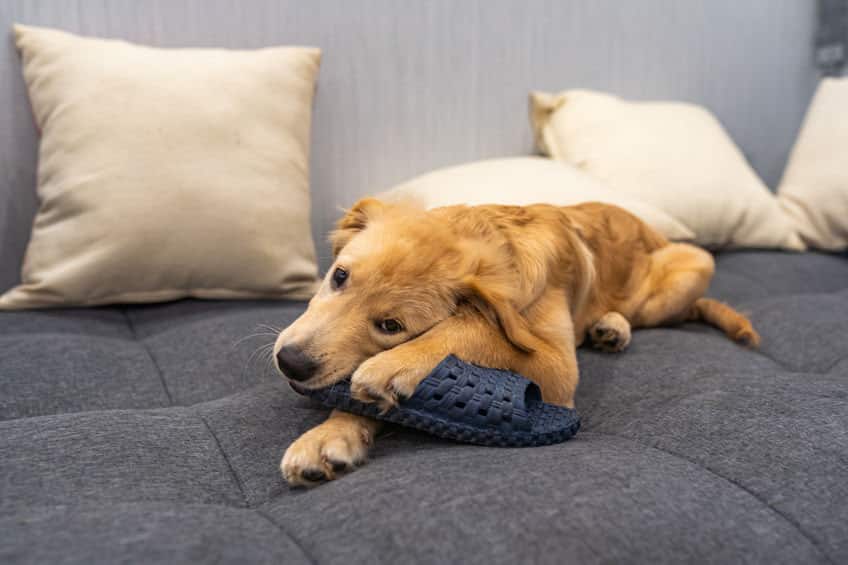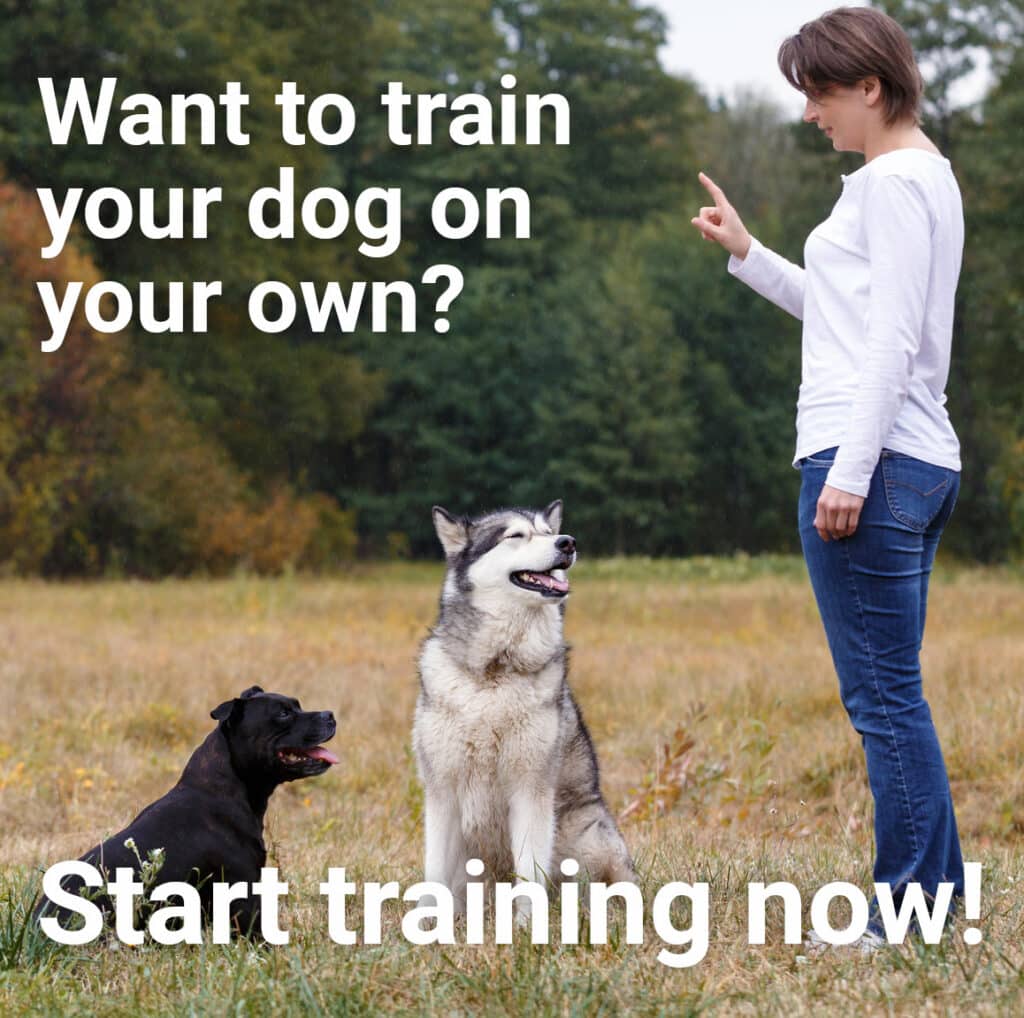
One of the top reasons people get frustrated with their dogs is the level of destruction they achieve just by being dogs. Damage like digging up the garden, chewing: shoes, remote controls, furniture, scratching walls, etc, can quickly send a dog out of their home.
Why do dogs do these terrible things to our wonderful stuff? It is very simple: shoes smell like you and are entertaining to chew, dirt is pleasurable to dig, and furniture is made of yummy wood, which is naturally fun to chew. Basically your home is one big playground with tons of exciting stuff to obliterate and your dog doesn’t know the difference between his stuff and your stuff.
When dealing with these behaviors you have more than one answer. The first is to manage the problem while you are teaching. Put your stuff away – there is a level of dog proofing the house that needs to happen while you are teaching.
When you aren’t at home keep your dog and your things safe by crate training your dog, or confine him to a small area like a mud room or an exercise pen, send the little fellow to daycare instead of leaving him alone. These are tools to manage your dog, but it doesn’t teach him not to destroy your things.
When you are at home you have to be mindful of your dog and actively teach them. Your dog needs a wide variety of toys to enjoy and keep him entertained. We encourage you to provide at least a dozen toys at a time, because your dog needs different kinds of stimulation. Younger dogs have short attention spans and get distracted just like a bored child. There are tons of entertaining toys these days and you can even make your own by taking an old bone and stuffing it with their next meal – freeze it and it will entertain them for hours.
A bored dog is not being engaged enough. You don’t have to entertain them 24/7 but you do need to engage your dogs mind and body with more activities. Dogs quickly get bored in our quiet and predictable homes, and a bored dog can mean trouble, while a busy dog doesn’t have time to get into mischief. The bigger your dog’s vocabulary the more opportunities you have to engage his mind.
Did you know there are dogs with hundreds of words? Yours can too. The tasks don’t have to be complicated you just have to do them, and of course the more fun it is for both of you the better.
Most people are content with the 5 basic commands and think they are doing well to get those accomplished. Come, sit, down, stay and heel seem to be a person’s limit for communicating with their dog. When in fact, every action your dog can perform should have a word and hand signal of association. Each toy in his toy box can have a name, all of the rooms in the house can have a name, and even the car can have different spaces: car, ride shot-gun, and backseat. He can easily know 20-30 words in the next few days or weeks, the only limits are in your own imagination.
Its fine to have a big vocabulary but you must use it. Don’t think of doing 15 minutes of obedience a day; this is about engaging your dog throughout the day. It is a continuous reminder to your dog that you are leading the dance, and the benefits are endless.
Lay out some toys on the floor along with some of your socks, shoes, and remotes and teach them what is theirs and what is not. Practice a “leave it” when they start to put their nose towards a forbidden item, but when they approach a dog toy reward with praise and enthusiasm, and say ‘Good toy’ in a warm, friendly tone. You are teaching your dog to think about his choices and if he respects your wishes he will not mess with your stuff. Dogs are hard wired to challenge you so be ready for him to test you. If you are clear and consistent he will only challenge you 3-5 times, then he will comply and do as you ask.
Creating structure and stimulation for your dog answers a multitude of problems, but you have to put in the time and effort to get the benefits. If your dog’s behavior is frustrating you, don’t give up, simply get help and get on a better path.

